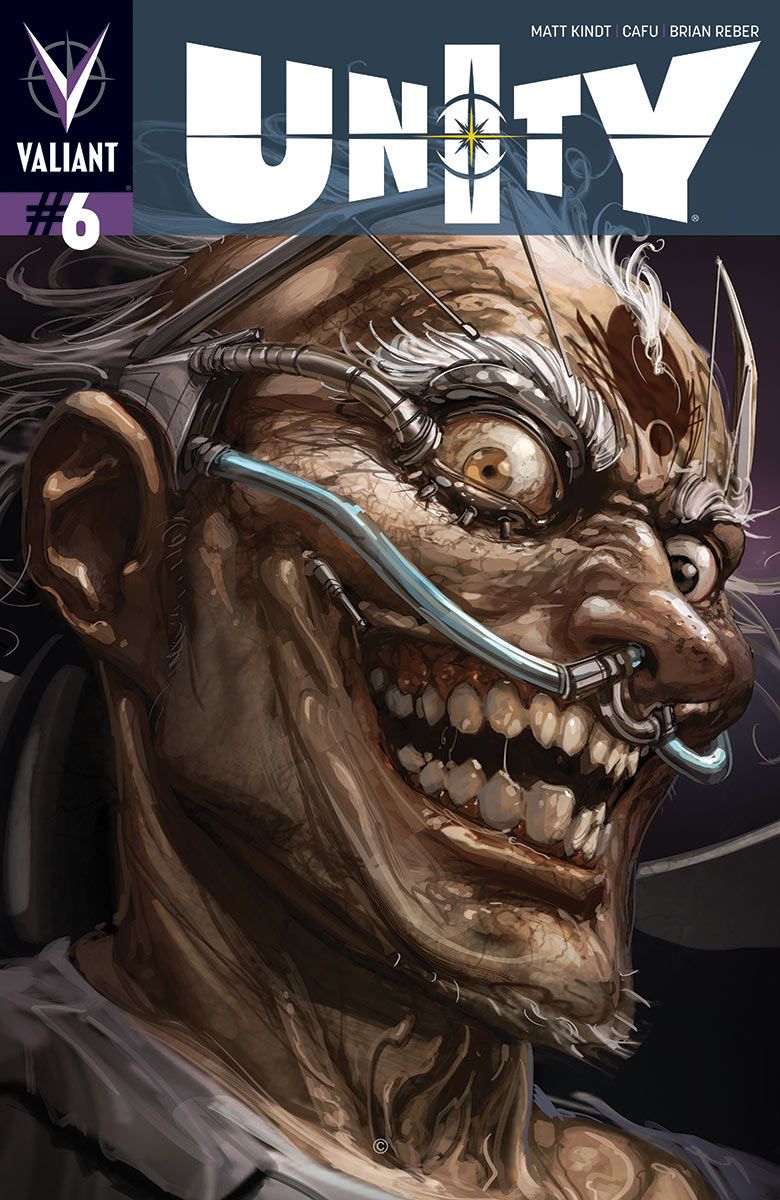Firmly entrenched in its second story arc, "Unity" has shown itself to be a comic with some staying power, rather than a mere team-up gimmick that would struggle to make it past its initial premise. Writer Matt Kindt and artist Cafu prove that in "Unity" #6, as the quartet of Ninjak, X-O Manowar, Livewire and The Eternal Warrior face a clever and far-reaching threat from the villainous Doctor Silk. Silk's creepy method of operations makes him a deadly enough menace, one that no single hero can withstand, as it were, and gives justification and motive for these disparate heroes to continue to hang around together.
Kindt uses a similar charter to the one Stan Lee used to give The Avengers a reason to carry on a half-century ago, by making his villain a significant threat that requires more than just a one-on-one confrontation to neutralize. Doctor Silk is not only creepy, using his scientific skills in an obsessive and manipulative manner, but has also concocted a brilliant and literally viral method for world domination. He's not the kind of super-foe who's going to be taken out with a punch to the face or tricked into surrendering; it's going to take a group of big hitters to end the threat, and Kindt makes sure that it's a convincingly even match. The twistedly evil incarnation of Silk shown on the startling cover by Clayton Crain and other artists isn't featured inside, but Kindt's story explains this, and thanks to Kindt, Silk doesn't come across as any less of a threat despite his relatively pedestrian look on the interior pages.
There's nothing pedestrian about any of Cafu's art throughout. His characters are all crisply defined, his style is clean and easy to follow, his splash pages are dynamic, and not since "Lost" has an upended ship in the forest looked so cool. Colorist Brian Reber plays it safe, attractively coloring the art without drawing any undue attention away from it. The art team almost pays homage to the house style of the original Valiant Comics, but with a little more flair. The art fulfills its primary purpose of presenting the story, with only the occasional flash here and there.
Kindt falls a little bit short on characterization in this issue, though; Gilad holds the noble and default position of most every superhero; that no innocents should be harmed in the course of battle; but Kindt oddly draws attention to this more than once, making the character seem more one-dimensional than The Eternal Warrior seen in past issues. Similarly, Aric Dacia provides a little bit of comic relief asking for permission to blast the enemy with his armor, at least the first time; not so much in the subsequent repeats of the same gag. The comic for the most part is well-paced, save for the introductory sequence, the length of which makes it start to feel like the old Three Stooges-stuck-in-a-phone-booth bit, making for a bit of a puzzling start.
Kindt's shortcomings are minor compared to the overall scope of the comic, however, and throughout he does a nice job of recapping the story's past events with a casual, unnoticeable demeanor. "Unity" #6 makes a case for the title to be a legitimate team book for a long time, and in Kindt's hands it has the capability to remain just that. It also serves as a sampler of sorts for Valiant Entertainment's characters; if any potential readers had the urge to give Valiant a try, this would be a good title to start with.

